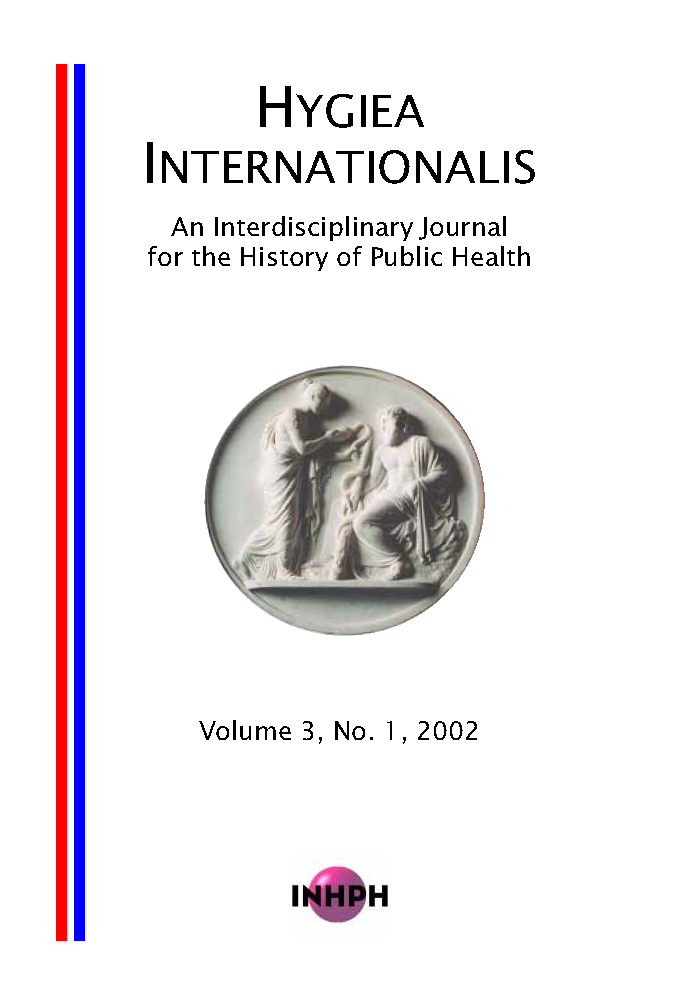Infant Mortality in Nineteenth Century Denmark. Regionality, Feeding Habits, Illegitimacy and Causes of Death
DOI:
https://doi.org/10.3384/hygiea.1403-8668.0231115Abstract
Nineteenth century Denmark experienced a growth in population more rapid than most other European countries. This growth was primarily based on a relative low infant and child mortality in the European context and an emigration rate lower than that of the other Scandinavian countries. Seen in this perspective, in a very concrete sense the future of the Danish nation was created in the nurseries.This study concentrates on mapping infant mortality in nineteenth century Denmark as an example of the composition of the infant mortality in a low mortality country: How homogeneous was infant mortality? Which groups bore the brunt of excess mortality and which groups got off with less? By what means was the low level maintained? First, however, a few words should be said on levels and trends.
Downloads
Published
2002-12-18
How to Cite
Løkke, A. (2002). Infant Mortality in Nineteenth Century Denmark. Regionality, Feeding Habits, Illegitimacy and Causes of Death. Hygiea Internationalis: An Interdisciplinary Journal for the History of Public Health, 3(1), 115–149. https://doi.org/10.3384/hygiea.1403-8668.0231115
Issue
Section
Articles
License
Copyright (c) 2002 the Author(s)

This work is licensed under a Creative Commons Attribution-NonCommercial 4.0 International License.






